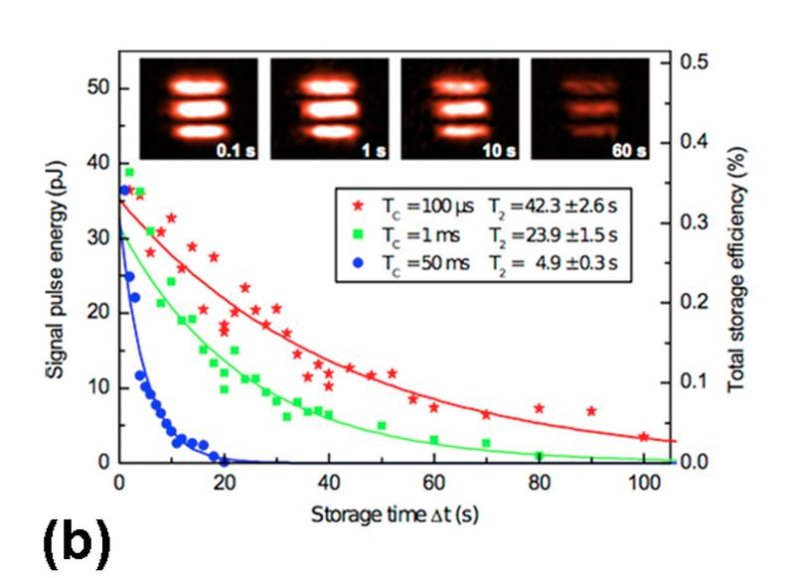Output pulse energy and storage efficiency as a function of light storage time for three coherence times (T2) obtained under different sequences of radio frequency pulses. The inset shows a three-stripe image retrieved from the memory after different storage times. (Heinze et. al)
Light -- the fastest thing in the universe -- is exceedingly difficult to halt, and German researchers have managed to freeze light for a record-breaking one minute.
They also successfully stored and retrieved data in the experimental beam in the form of a 100-micrometer-long picture with three horizontal stripes on it -- a crucial step for quantum information processing.
Light travels about 300 million meters per second in a vacuum, and one minute is a very long time. In the one minute the light was stopped, it could have traveled about 11 million miles -- more than 20 round trips to the moon.
In 1999 scientists slowed light to just 17 meters per second, then in 2001 halted it completely for a fraction of a second. Earlier this year, researchers held light still for 16 seconds using cold atoms.
George Heinze and colleagues at the University of Darmstadt, Germany fired a laser at an opaque crystal. This sent the crystal's atoms into a quantum superposition of two states, making it transparent to a narrow range of frequencies -- a process called electromagnetically induced transparency (EIT).
Then, researches fired a second laser into the crystal, trapping it there by switching off the first laser, ending transparency and returning the crystal to its opaque state.
A magnetic field can extend storage time, but complicates laser configuration. To break the one-minute barrier, researchers created an algorithm to find the perfect magnet and laser combination.
Researchers say that with better materials, "there is clear hope that this could be a solid-state platform able to achieve coherent light storage for tens of minutes."















